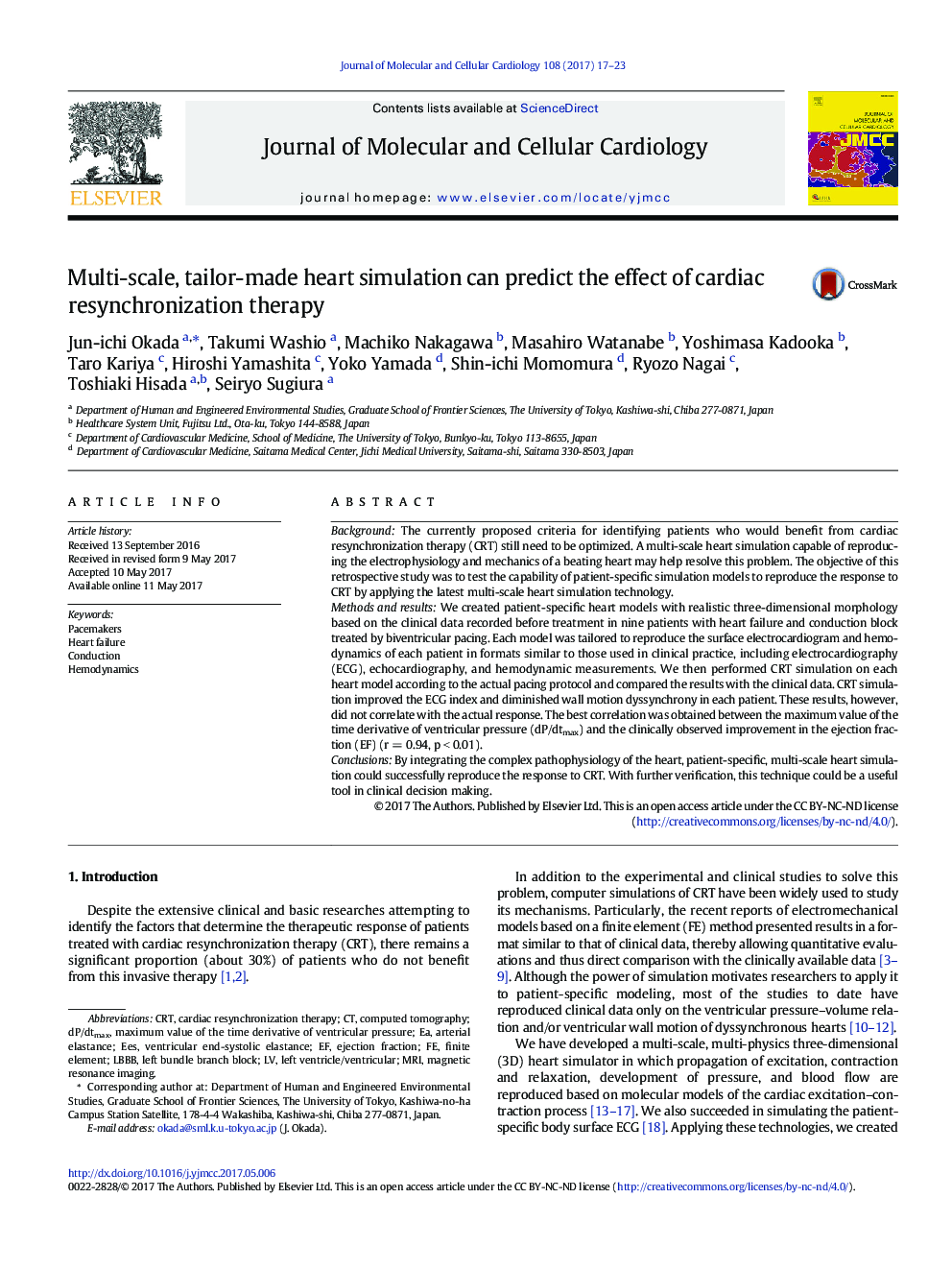| Article ID | Journal | Published Year | Pages | File Type |
|---|---|---|---|---|
| 5533532 | Journal of Molecular and Cellular Cardiology | 2017 | 7 Pages |
â¢We developed patient-specific computational models of failing human heart.â¢Heart models faithfully reproduced patients' electrophysiology and hemodynamics.â¢We also simulated the cardiac resynchronization therapy (CRT) to these heart models.â¢ÎdP/dtmax by CRT simulation strongly correlated with the actual therapeutic response.â¢Patient-specific CRT simulation can be a useful tool for identifying responders.
BackgroundThe currently proposed criteria for identifying patients who would benefit from cardiac resynchronization therapy (CRT) still need to be optimized. A multi-scale heart simulation capable of reproducing the electrophysiology and mechanics of a beating heart may help resolve this problem. The objective of this retrospective study was to test the capability of patient-specific simulation models to reproduce the response to CRT by applying the latest multi-scale heart simulation technology.Methods and resultsWe created patient-specific heart models with realistic three-dimensional morphology based on the clinical data recorded before treatment in nine patients with heart failure and conduction block treated by biventricular pacing. Each model was tailored to reproduce the surface electrocardiogram and hemodynamics of each patient in formats similar to those used in clinical practice, including electrocardiography (ECG), echocardiography, and hemodynamic measurements. We then performed CRT simulation on each heart model according to the actual pacing protocol and compared the results with the clinical data. CRT simulation improved the ECG index and diminished wall motion dyssynchrony in each patient. These results, however, did not correlate with the actual response. The best correlation was obtained between the maximum value of the time derivative of ventricular pressure (dP/dtmax) and the clinically observed improvement in the ejection fraction (EF) (r = 0.94, p < 0.01).ConclusionsBy integrating the complex pathophysiology of the heart, patient-specific, multi-scale heart simulation could successfully reproduce the response to CRT. With further verification, this technique could be a useful tool in clinical decision making.
